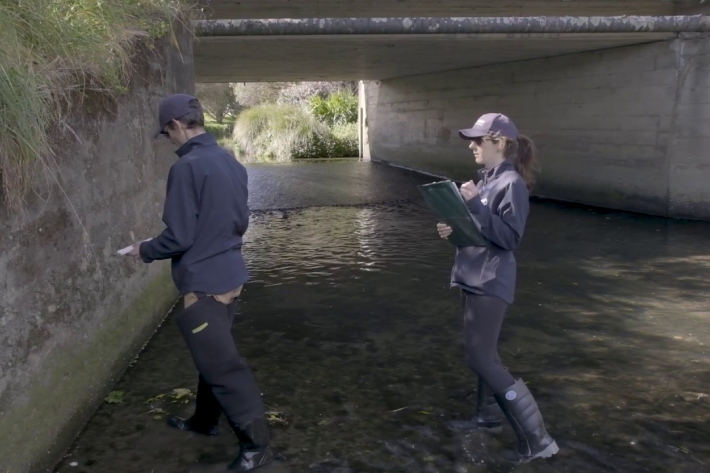-

Report: Trends analysis for selected indicators of Waikato River health and wellbeing 2010-2019
ServiceReport: Trends analysis for selected indicators of Waikato River health and wellbeing 2010-2019 -

New weapon in fight against invasive aquatic weeds
Media release20 July 2021A combination of artificial intelligence and scientific ingenuity looks set to be the next step forward in protecting Aotearoa New Zealand’s lakes and rivers from invasive aquatic weeds. -

NIWA in the field: Sampling the Waimakariri
Feature story19 May 2021Environmental monitoring technician Patrick Butler has spent hours travelling between the upper and lower reaches of Canterbury’s Waimakariri and Hurunui Rivers. His mission – river water quality sampling. -

The future shape of water
Feature story11 February 2021Susan Pepperell looks at some of the tough decisions looming around access to freshwater and how science is helping with solutions. -

Eutrophication Explorer
A web application tool to explore monitoring data and model predictions related to stream and estuary eutrophication -

Freshwater species show vulnerability to climate change
Media release15 September 2020A new study has identified seven freshwater species native to Aotearoa-New Zealand that will likely be highly or very highly vulnerable to climate change. -

Maniapoto Cultural Assessment Framework
Research ProjectTe Nehenehenui (previously Maniapoto Māori Trust board) and NIWA are working collaboratively to support Ngāti Maniapoto whānau to reconnect with and participate in the assessment of their freshwater according to their values. -

Eutrophication Risk Assessment
Research ProjectEutrophication occurs when nutrients in streams, rivers, lakes and estuaries cause excessive growth of aquatic plants and algae (primary producers). -

Constructed wetland guidelines
Constructed wetlands are a water quality restoration tool that can reduce levels of sediment, nutrients and microbes such as E. coli. -

SHMAK habitat - rubbish
The SHMAK method for rubbish involves collecting and identifying all the rubbish (litter) in the stream and on the stream banks. -

SHMAK habitat – visual habitat assessment
The SHMAK visual habitat assessment gives your stream a score that you can use to assess changes over time or compare streams. -

SHMAK habitat – streambed composition
Two methods for describing streambed composition: the visual assessment method is quicker while the Wolman walk is more accurate.
